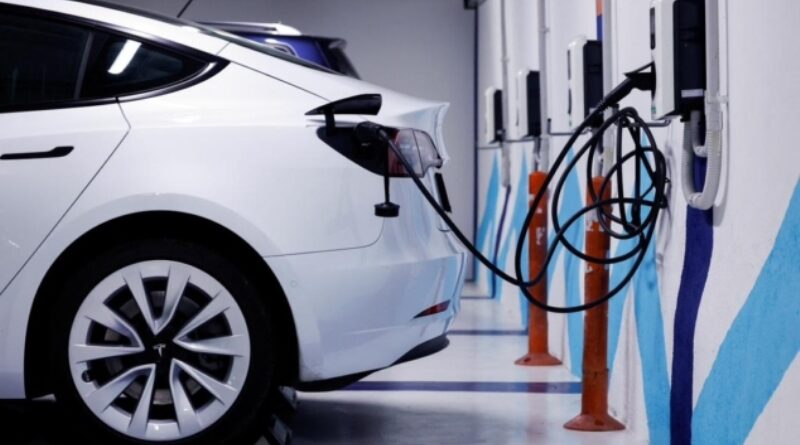Electric Car Battery Life: Everything you need to know, including how long they last
Compared to combustion-engined cars, electric cars have fewer moving parts, regenerative braking tends to mean less frequent replacement of pads and rotors, and servicing requirements are greatly reduced. Add in the ability to charge on the cheap during low demand times, and choosing to purchase or lease an EV isn’t just about lowering tailpipe emissions, but spending fewer hard-earned dollars on fuel. However, EVs do tend to cost significantly more to purchase.
What makes electric cars more expensive to buy than their combustion-engined rivals is primarily the cost of manufacturing large lithium-ion battery packs. The hope is that continual improvements will bring cost-per-kWh down to the point that electric vehicles (EV) and those powered by an internal-combustion engine (ICE) are on an even footing. But even with parity, some consumers are concerned that the potential replacement cost of an EV’s battery could mean dealbreaker bills down the road.
Happily, with EV adoption more widespread than ever, the growing pool of privately owned EVs shows a clearer picture of how long the average EV’s battery pack might last. Further, manufacturers have long been investing the R&D money into making sure modern battery packs can go the distance.
How a Lithium-Ion Battery Works
Most electric cars use a lithium-ion battery pack. While there are often news items about new battery chemistry prototypes showing promise, the infrastructure to build lithium-ion batteries at scale is already either in place or under construction. While the lithium-ion battery will continue to be improved, the near future is unlikely to see an industry shift away from a well-understood technology.
Lithium-ion batteries have the following benefits:
They have a higher energy density than either conventional lead-acid batteries used in internal-combustion cars, or the nickel-metal hydride batteries found in some hybrids such as Toyota’s new body-on-frame models like the Land Cruiser or 4Runner.
They self-discharge at a lower rate than other battery types, losing only 1 to 2 percent per month (as long as the weather conditions aren’t too extreme).
They do not require periodic full discharges, nor any maintenance to electrolytes.
They provide reasonably consistent voltage even as the charge degrades.
However, lithium-ion batteries do have some drawbacks:
They’re expensive to produce, and mining the cobalt and nickel required has both environmental and humanitarian concern.
Onboard battery management is critical to longevity.
Full charge and full discharge are damaging to battery life.
Overheating and potential thermal cascading into fires is possible.
Battery charging and discharging is affected by extreme temperatures.
To address most of these drawbacks, automakers have developed software-based management of battery health that includes both cooling and heating to help improve efficiency in environments from a Norwegian winter to a Texas heat wave.
Take for instance Audi’s new Q6 e-tron, which shares its platform with the EV version of the Porsche Macan EV. Compared to earlier e-tron models, the Q6’s battery back is smaller, lighter, and made up of fewer cells. It uses fewer rare earths in manufacturing, and Audi can build these packs in roughly half the time it took previously. The pack is tested in extreme weather conditions for longevity, and it features some clever software management, such as the ability to charge as two virtual battery packs in parallel to reduce voltage losses.
EV Battery Life Expectancy
The simplest way to judge the expected longevity of a battery pack is to see what the manufacturers promise. All automakers currently offer at least an eight-year, 100,000-mile warranty on EV battery packs.
Tesla offers an eight-year battery warranty, and depending on the range and type of vehicle, coverage for 100,000 to 150,000 miles. This guarantee isn’t just against the complete failure of a battery pack, but against degradation. As they age, charge cycle by charge cycle, a lithium-ion pack loses a fraction of its total capacity. Tesla’s fine print says that its vehicles must retain at least 70-percent of their capacity during the warranty period. If they drop below that threshold, they’ll be replaced for free.
It seems to be a safe bet. A crowdsourced study by Tesla owners in the Netherlands—using data from around the world—showed that Model S owners were seeing an average degradation of around 5 percent in 50,000 miles of driving. The degradation curve also begins shallowing out, indicating a loss of around 10 percent capacity or less after 150,000 or even 200,000 miles. On our long-term Model 3, the battery degraded roughly 6 percent in the first 20,000 miles, but then held there all the way to our 40,000-mile end point.
Hyundai and Kia offer a similar battery warranty for their fleet of EVs, with 10-year, 100,000-mile coverage. Likewise, the warranty protects against degradation should capacity fall by more than 30 percent over the warranty period.
The U.S. Department of Energy, meanwhile, predicts today’s EV batteries ought to last a good deal past their warranty period, with these packs’ service lives clocking in at between 12 and 15 years if used in moderate climates. Plan on a service life of between eight and 12 years if your EV is regularly used in more extreme conditions.
As of 2023, the average age of all passenger vehicles in the U.S. is currently 12 and a half years old. Your EV’s battery health might never even come under consideration.
Safety and Maintenance of Your EV
For a deep dive into caring for your electric car, see our EV maintenance guide.
Electric cars sold in the United States are held to the same safety standards as all other passenger vehicles. Additionally, EV battery packs are required to be encased in a sealed shell as well as be able to handle testing conditions related to overcharging, extreme temperatures, fires, accidents, water immersion, vibrations, and short-circuiting, according to the Department of Energy. EVs also need to use “insulated high-voltage lines” and be able to deactivate their electrical systems in the event of a crash or short circuit.
Electric-car fires due to runaway thermal events often grab headlines because they are so hard to fight. We’ve had more than 100 years of experience managing flammable gasoline, but less time dealing with high-voltage, high-energy automobiles. Overall, however, electric cars are statistically much less likely to catch fire than ICE cars. A recent study out of Sweden, which included U.S. insurer data, found that per 100,000 vehicles sold, there were 1530 reported fires for purely combustion-powered cars, and 3475 fires for hybrids. EVs? Just 25.
Maintaining an electric car is a relatively straightforward affair. Owners need to keep an eye on tires and brake pads and rotors, though the latter items ought to last longer than those of cars with internal-combustion engines, as the regenerative braking function of EVs puts less wear on the mechanical braking bits.
The one area where EVs may cost more than combustion-engined cars in terms of maintenance is tires. Torque-rich electric motors can shrug off the weight of an electric car with ease, but the physics haven’t changed. EVs are usually heavier than ICE cars and tend to wear out their tires a bit more quickly in general. In addition, EVs’ tires often start out with less tread depth, a decision made by automakers no doubt to improve the vehicle’s range rating.
Maintaining Battery Health
Software can do a near-flawless job of maintaining battery health, but accidents still do happen. Most EVs use battery packs that sit under the floor, meaning that an accident at any corner could cause physical damage.
In the case of a collision, hopefully insurance should cover the damages. However, it is also possible to cause some extremely expensive damage to an EV by running over road debris. A rock that might have punched out the oil pan on an ICE car can also puncture a battery pack, and the costs to replace that pack outstrip even a replacement engine.
But take the recently launched Mercedes-Benz G580 as an example of how manufacturers are taking battery protection seriously. The G580 carries its 116.0-kWh pack between its frame rails, and, to ward against punctures from underneath while off-roading, has a special carbon-reinforced plate protecting its belly. It’s stronger than steel but much lighter.
Battery Charging Cycles
Few owners play fuel-light bingo and run their ICE-powered cars right out of fuel. In fact, many manufacturers build in a little reserve when the fuel gauge reads empty, so you have just enough range to get to a refueling station. So it is with EVs.
Most owners won’t completely discharge the battery of their EV—and the onboard battery management won’t let you, either.
For those using fast-charging stations and parking on the street or in underground parking at an apartment building, the use case is still not totally unlike that with an ICE car. That Audi Q6 e-tron can go from 10 to 80 percent charge in just 21 minutes on an 800-volt charger. That’s slower than filling up a gas tank at a conventional pump, but just grab a coffee and check some emails.
Fast-charging is known to degrade lithium-ion batteries more quickly than slower charging methods like plugging in to a Level 2 home charger, but the effect seems to be very small with modern software management. The difference is only a few percentage points of tens of thousands of miles driven.
Battery Thermal Management Systems
An active thermal management system is key to keeping an electric car’s lithium-ion battery pack at peak performance. Lithium-ion batteries have an optimal operating range of between 50–86 degrees Fahrenheit, a temperature range where most modern EVs attempt to maintain their battery packs at by way of a cooling/heating circuit.
Much like heating and cooling the interior of a car, heating and cooling an EV’s battery pack burns energy. As such, expect the overall driving range to suffer somewhat when driving in extreme temperatures. At least with these systems in place, EV battery packs are less likely to degrade at a notably greater rate than they would in less extreme temperatures.
The truth is that today’s EV batteries will inevitably need replacing in the future. Fortunately, modern EV battery packs should prove problem-free for nearly the first decade of use—possibly even longer. By the time today’s EVs will need a replacement battery pack, it’s likely the manufacturing and material costs will be far less than they are today.
We’re not saying that replacing your EV’s lithium-ion battery pack a decade from now will be cheap, but we wager doing so will be much more affordable than it is today.




